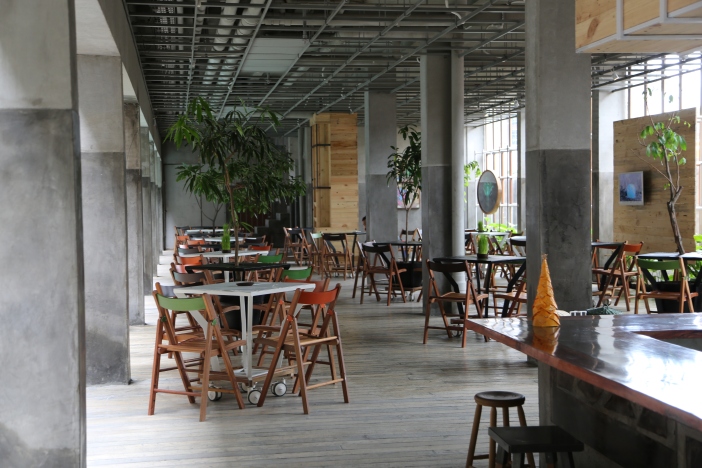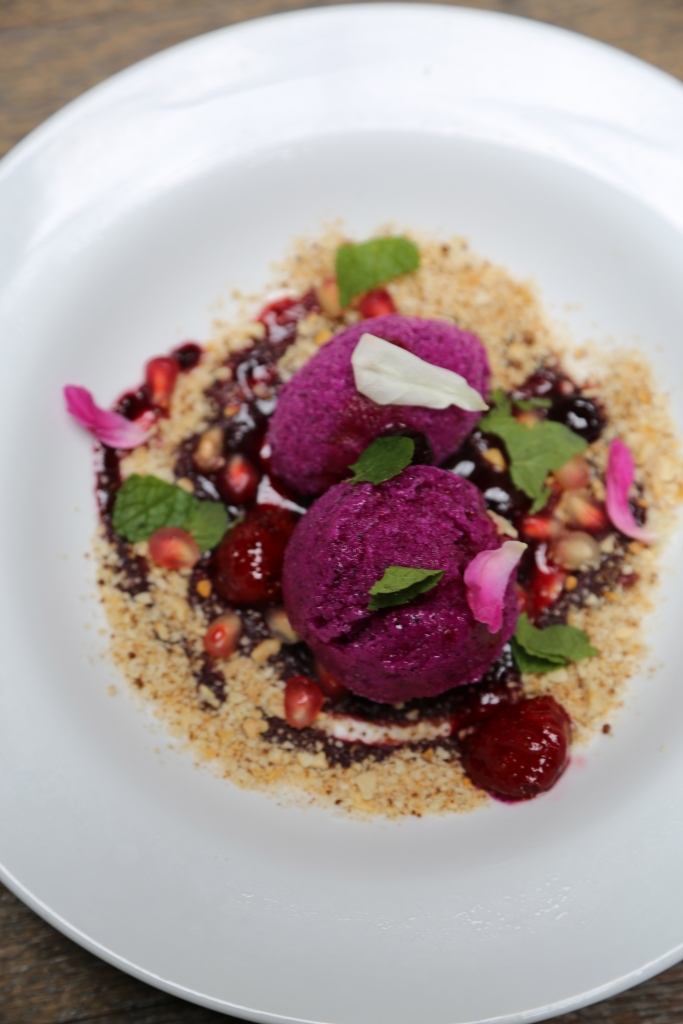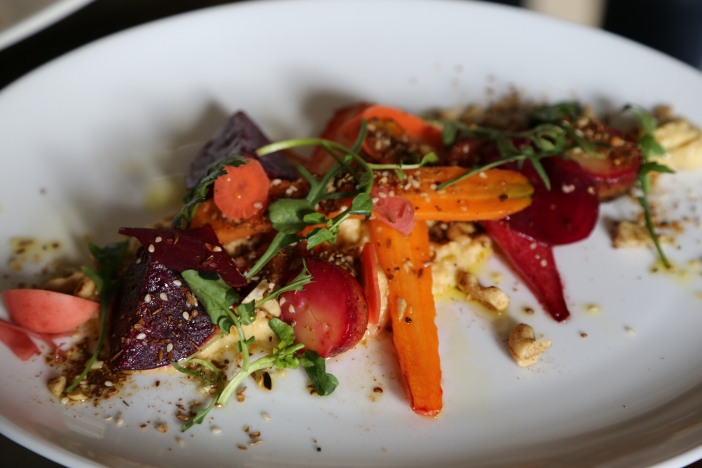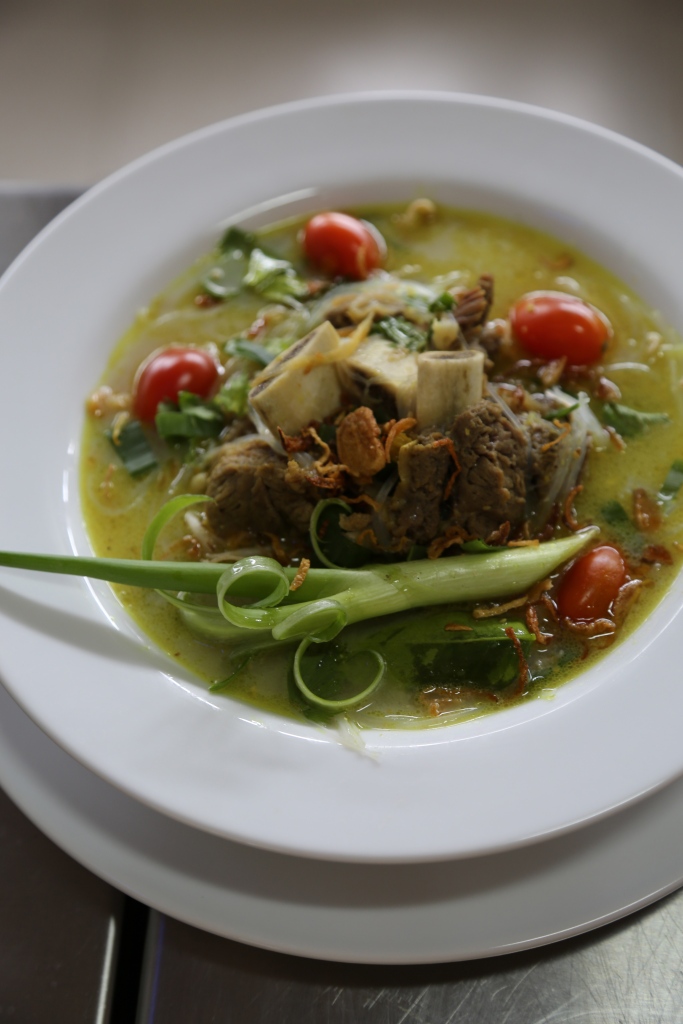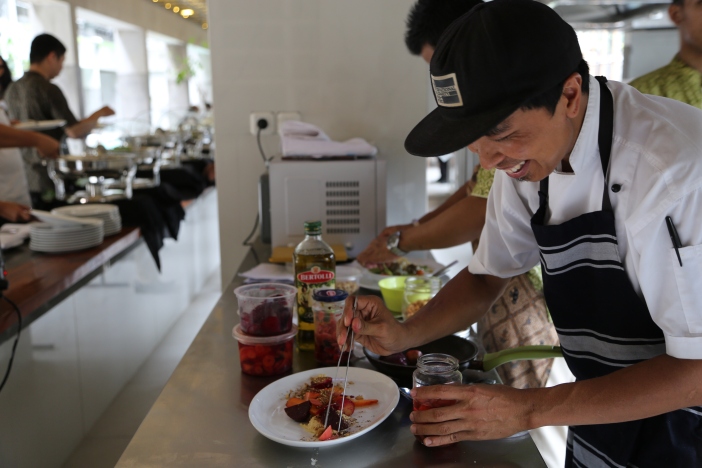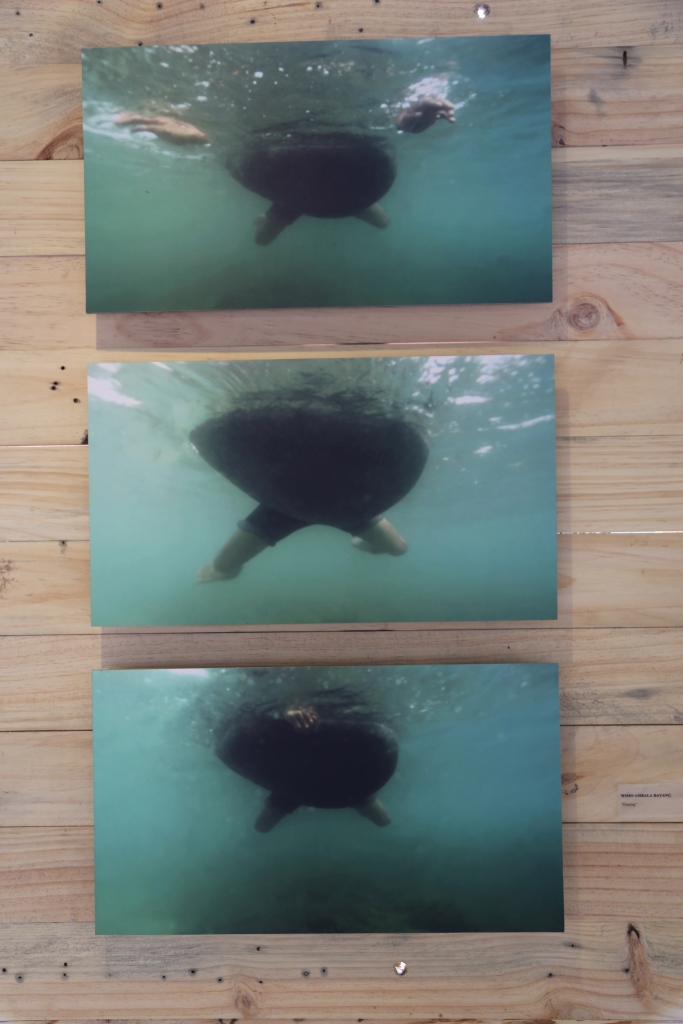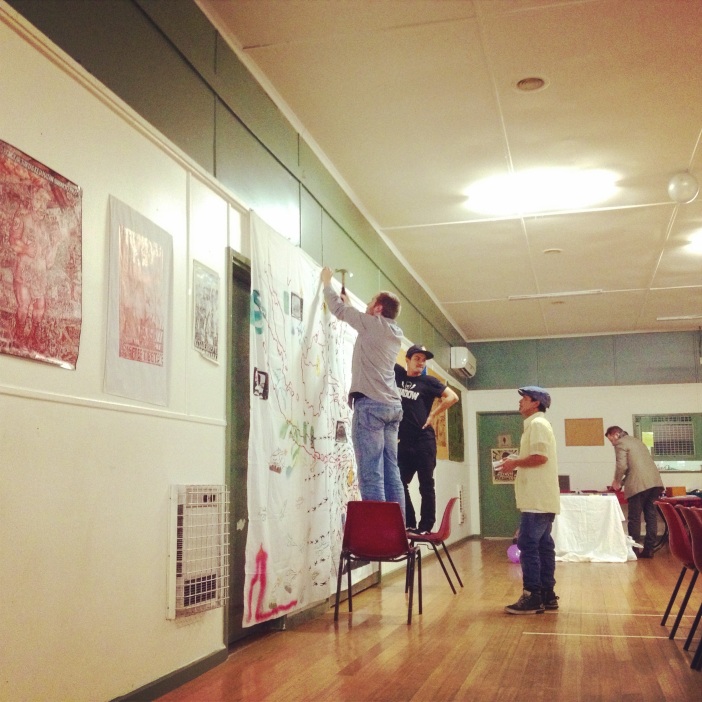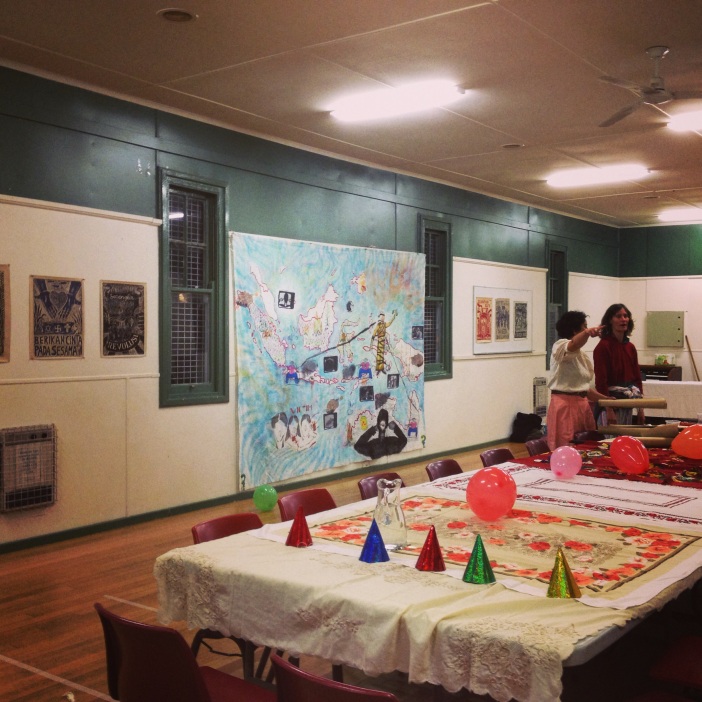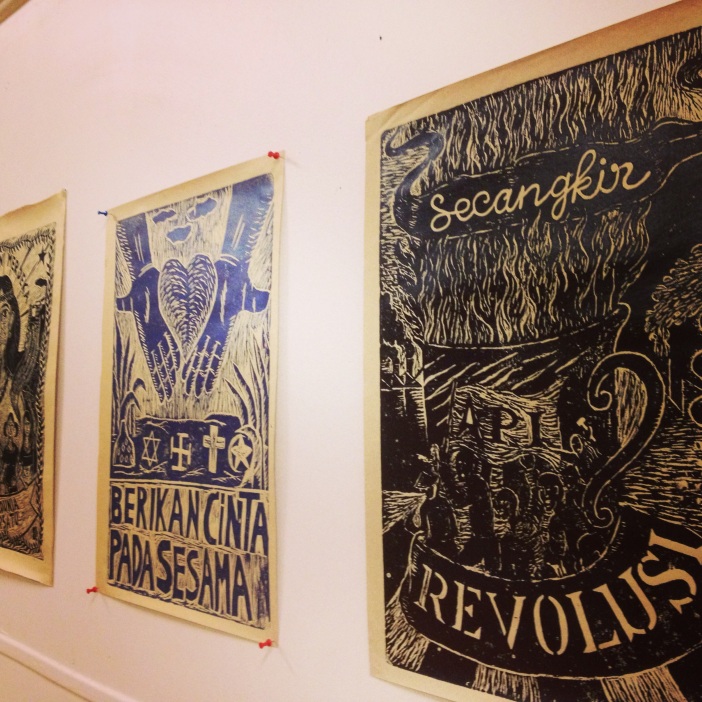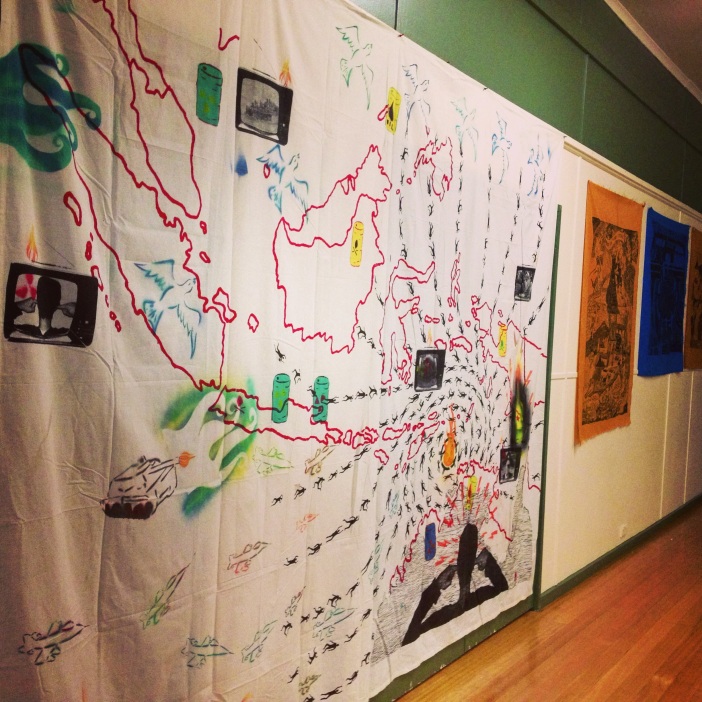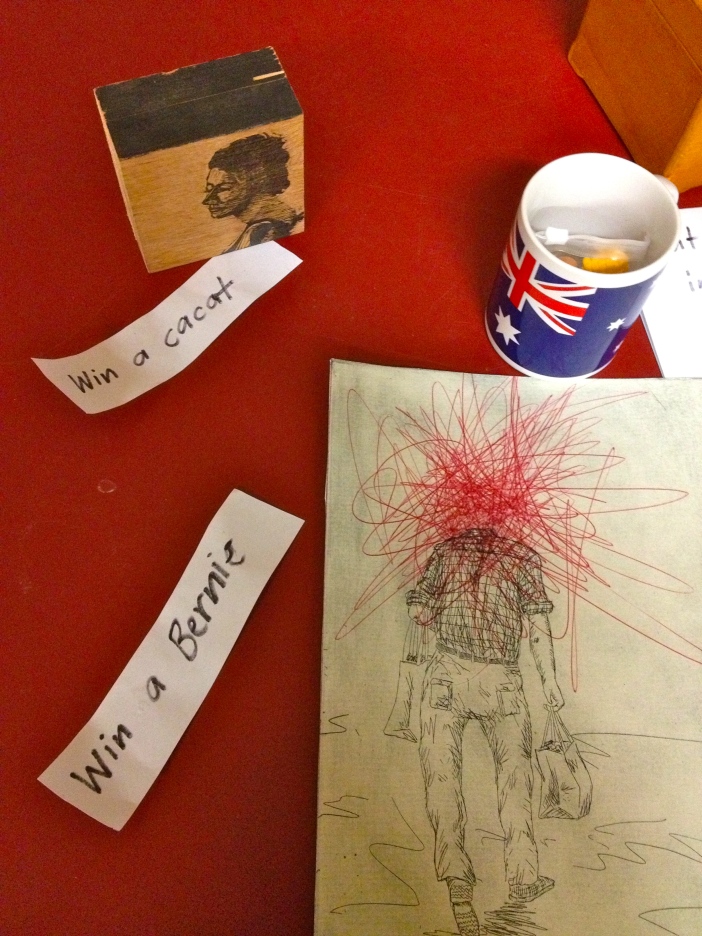I remember being in awe of the carnivorous venus fly trap as a child; so brutal was its annihilation of tiny insects. Next to the Kantong Semar,however the venus flytrap somewhat pales in comparison. The Kantong Semar has been known to eat small animals and monkey’s drink nectar from them, thus the Sumatran version of its name, Kancung Beruk (monkey). David Attenborough is all over it, at least in Kalimantan.
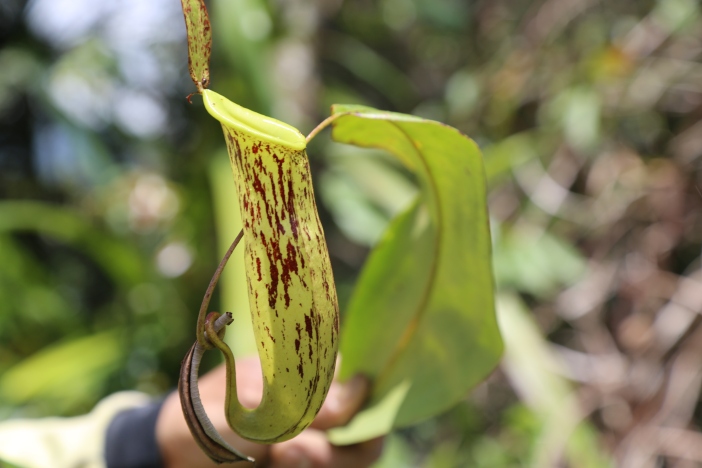
There are over 100 species of the Kantong Semar (Nepenthes), a tropical carnivorous pitcher plant, and Kerinci National Park of Sumatra has the largest number of Kantong Semar varieties. The Kantong Semar adds to Sumatra’s coolest plant title reign, along with both the largest flower in the world (and quite possibly the stinkiest) —Rafflesia arnoldii ( “stinking corpse lily”)—along with the tallest—amorphophallus sp.
This is Jon’s story of foraging for Kantong Semar in his home-town of Sumatra, as part of his research project this year focusing on culinary heritage of Kerinci.
We set off on foot, approximately 50km from Sungai Penuh (Full River), the entrance to the Kerinci National Park. My uncle led our foraging expedition to the foothills of Mount Raya, east Kerinci, where one of the varieties of Kantong Semar pitcher is still commonly found. In my village, my uncle has the responsibility of leading all expeditions to forage for the plant.
The pitchers’ uses in Sumatra are principally medicinal and ceremonial. The nectar in the plant is deemed effective to heal burns, eye problems, as well as a drink for the passer-by monkey in the forest.
The Kantong Semar is considered the most important element when traditional leaders meet in the decision-making forum of ‘Kenduri Sako’ to deliberate all sorts of village-matters, particular on the use of land, due to its fertility symbolism. Local healers (dukun) believe that the plant can also cure infertility. The fact that it is carnivorous seems to be of little significance, in comparison to its fertility symbolism. The most fascinating thing about some of the varieties of this plant is its inter-sex nature. It is said to symbolise elements of both male and female genitalia. The Sumatran version of the name Kancong Buruk refers to Monkey’s genitalia.

The parts of the plant used depends on the purpose. For ceremonial purposes, the pitcher is stuffed with rice and coconut milk, then steamed. It is most commonly served with a smoked beef speciality, Dendeng Batokok. Sometimes it is used to make a sweet dessert using sago or tapioca. To the west of Kerinci, it is more common to use bamboo to stuff rice and meat, but sometimes the Kantong Semar is also used. Local healers boil the pitchers’ leaves to make a drink, to be drank warm or cold.
We walked to a base camp of a family that live here temporarily as farmers. They are allowed to use some of the forest for their farming practices. The area is now used for mixed farming area with cinnamon, coffee and horticulture, chilli and potatoes.
We sat and rested with the farmers as they explained where they had last sighted the pitcher. They said they many people come through here to forage. Some species of Kantong Semar they can’t find anymore and they suggested we look for the smaller pitchers near swamplands as they are the most common, and are not in danger of disappearing.
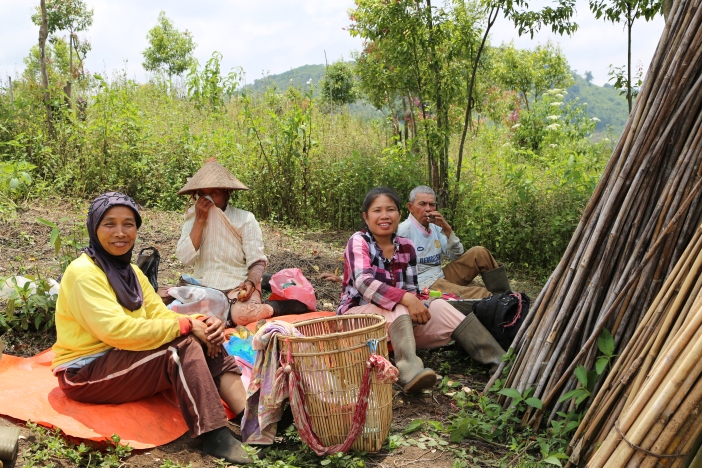
They accompanied us through a narrow path along the swamplands into thicker forest. We found our first harvest near the swamp, just like the villagers had said. There were a number of varieties. One type was growing on the ground, this was the root, it then stemmed up into a vine that can apparently grow more than 20m high. We gathered more than 50 pitchers.
We gathered them to take home where we experimented with a number of sweet and savoury flavours. It has a beautiful earthy sweet flavour. We are continuing to document its uses.
Sir David Attenborough, in case you want to go to Sumatra to document the amazing varieties of Kantong Semar, you are welcome to drop by to try some, perhaps served with a side of smoked beef and kenari puree!
For more stories, recipes and taste testing of the Sumatran Kantong Semar, come along to this year’s Ubud Food Festival!














